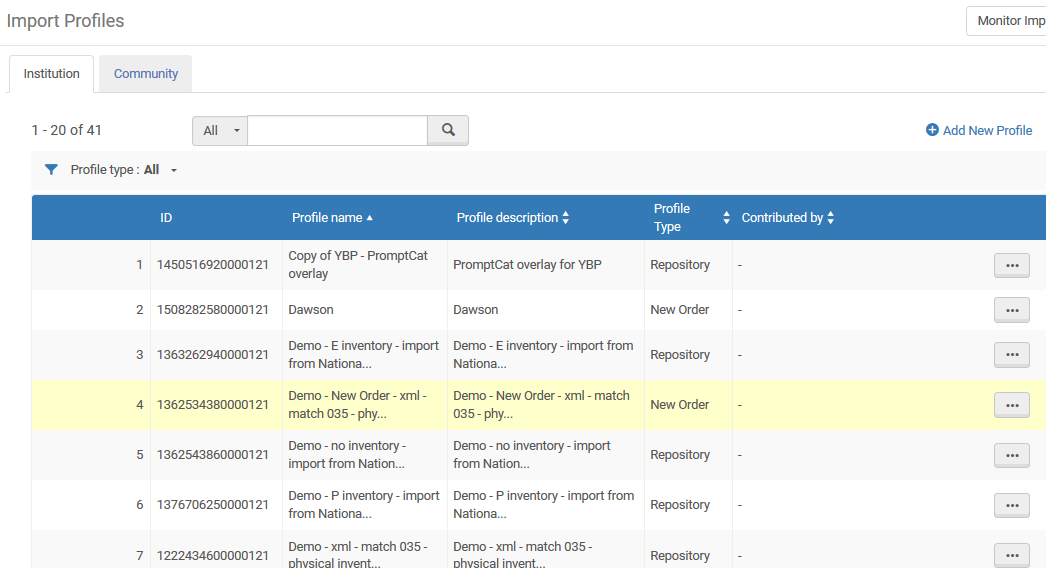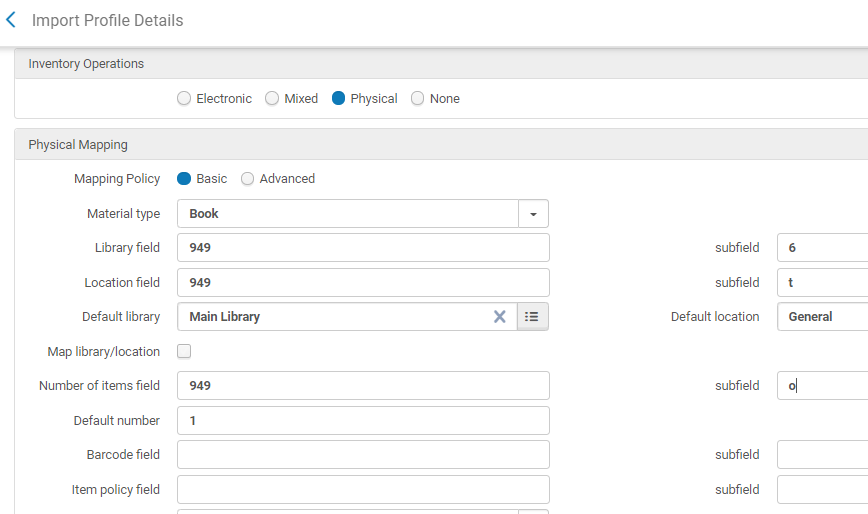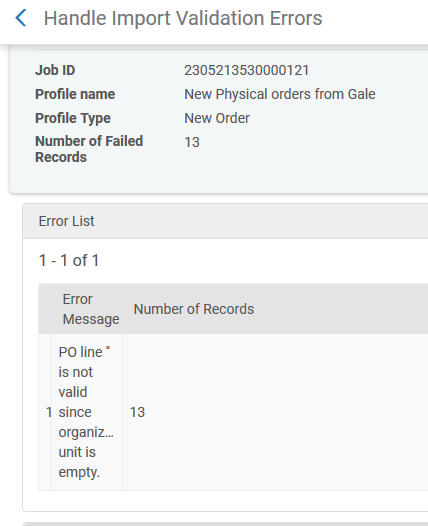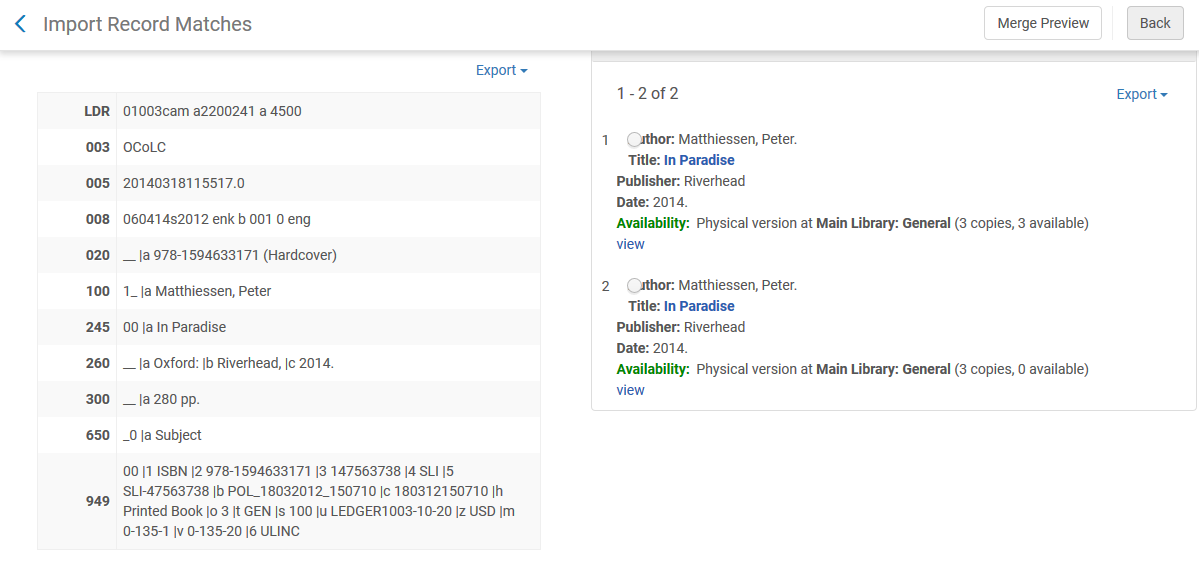Import Profiles, EOD
What options are there for importing embedded order records in Alma?
Alma supports the ability to import embedded order records. The rules by which it imports records are defined in “import profiles.” Many import profiles may be setup —for records from different sources, containing different data types, etc.:

If the library is importing using EOD, it can use one or more profiles that have been created for a particular vendor with specific configurations for the kinds of purchases that are being processed. A vendor can have multiple import profiles with specific configurations for a particular purchase type. For example, different import profiles might exist for purchases being funded through different funds, or for purchases for different libraries in the institution.
The following screen capture is an example of defining inventory information as part of an embedded order profile:

Does Alma automatically generate purchase orders on import of vendors' MARC records?
MARC records with embedded order data can be used to create purchase orders in Alma, as well as create records for the items added to the library’s inventory using data supplied by the individual institution or the library’s materials vendor.
This includes support of vendor approval programs for both print and electronic resources, such as e-books. In this workflow, Alma imports an EOD record (embedded order data) and puts the description into the metadata management systems (MMS), and turns the embedded order information into a PO line.
The library will need to configure the import profile in Alma based on its agreement with the material vendor regarding the specific fields that will be used to supply the order and item information in the MARC record.
Loading EOD files into Alma has the potential to automate the entire acquisitions and cataloging workflow, making it possible to order a resource using the vendor’s interface, and unpack and shelve the materials with minimal effort.
Does Alma provide easy correction of errors (e.g. if the wrong record is downloaded at the point of acquisition)?
The import process supports automation as much as possible. For example, the import can be defined to automatically merge an imported record into the catalog in cases where the system found a single match.
If at any stage during the import process, either because of errors, or because the import profile definition requires mediated intervention, the staff user will be able to review issues using a dedicated task list. This task list will provide the staff user with information on what the issue is as well as the relevant actions the user can perform.
A staff user can view the import’s records for specific validation or matching errors. He/she then can choose to not import the records, to go ahead with the import, or to stop the import of the entire file.

Import Issues – Specific Import:

The staff user also can view the import’s records for specific matching issues. He/she then can view the matches found for a specific record, decide which specific one is the actual match, and merge the imported record into it.
View matches of an imported record:

As part of the matching during the import process, the imported record is evaluated and compared to the institution’s catalog. Matches can be done using specific match “profiles” which define how a match is evaluated. There are two types of matches:
- ID-based
- “fuzzy”, weighted match vector
The “fuzzy” match method attempts to evaluate a record based on various non-unique identifiers and fields to determine if the imported record and the catalog record are in fact duplicates.
Alma also will use out of the box or institution-defined merge rules to calculate the new record content. These rules determine which fields are preserved in the existing catalog record, and which fields will be imported from the import record.

Total views:
6357
